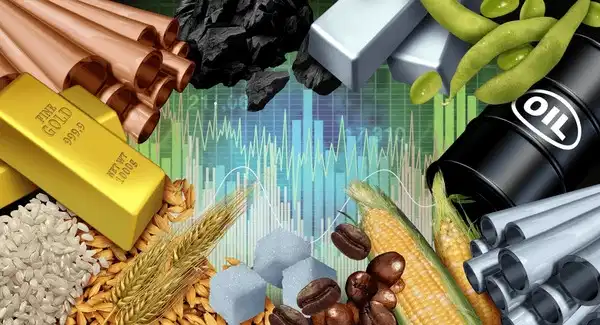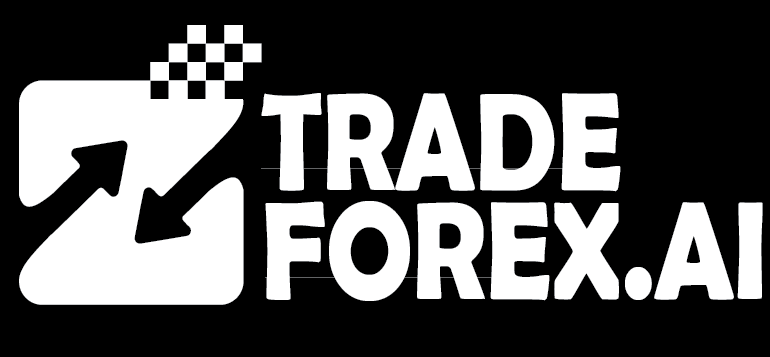A commodities exchange is a marketplace where people trade the goods that keep the world running—things like oil, gold, wheat, and coffee. It’s where buyers and sellers meet to agree on fair prices and where producers, consumers, and investors can manage the ups and downs of the market. Whether it’s through a traditional trading floor or a modern digital platform, a commodities exchange helps keep trade transparent, organized, and efficient. It also gives everyone involved a way to manage risk and plan for the future through tools like futures and options contracts.
In 2025, these exchanges matter more than ever. Global markets are moving faster, shaped by technology, weather patterns, and shifting demand for energy and raw materials. Prices for oil, metals, and agricultural goods can change in seconds because of interest rate announcements, policy decisions, or geopolitical news. Every small event has the potential to ripple through economies worldwide.
That’s why understanding how a commodities exchange works has become so important. These platforms help farmers secure prices before harvest, let airlines manage their fuel costs, and allow investors to find opportunities in changing markets. Knowing how commodity trading works and the different types of commodity markets helps people make smarter, more confident decisions in today’s fast-paced, unpredictable global economy.

What Is a Commodities Exchange?
A commodities exchange is a regulated financial marketplace where standardized contracts for commodities, futures, and options are traded. It serves as a neutral ground that brings together producers who want to hedge against future price changes and traders or investors who seek to profit from those fluctuations.
Unlike traditional markets where physical goods are exchanged, most trading on a commodities exchange involves paper contracts. These contracts specify the quality, quantity, and delivery date of a commodity. This standardization ensures transparency and fairness for all participants.
For example, the Chicago Board of Trade (CBOT) lists a wheat futures contract representing 5,000 bushels of a specific grain to be delivered on a defined date. A coffee farmer in Brazil or a metals trader in London can trade such contracts without ever handling the physical product. The goal is price protection, efficient trading, and consistent liquidity.
Modern global commodity exchanges like the Chicago Mercantile Exchange (CME), London Metal Exchange (LME), and India’s Multi Commodity Exchange (MCX) act as financial engines of the global supply chain. They allow economies to manage inflation, stabilize costs, and set benchmark prices used across borders.
How Commodity Trading Works
To understand how commodity trading works, imagine it as a structured ecosystem connecting buyers and sellers with defined rules and technology-driven platforms. The process allows both speculation and hedging, providing tools for risk management and profit generation.
- Listing of Commodities: Each exchange publishes a list of tradable commodities, including energy resources such as crude oil and natural gas, precious metals like gold and silver, and agricultural products such as wheat, corn, and coffee. Every product follows a standardized contract that defines its size, grade, and delivery timeline, ensuring uniformity across the market.
- Trading Mechanism: Modern trading takes place electronically through sophisticated platforms. Traders place bids and offers in milliseconds. When prices align, the system executes the order instantly. This speed not only increases efficiency but also enables global participation regardless of geography.
- Price Discovery: Commodity prices emerge from continuous market interaction. Supply and demand forces adjust prices in real time, reflecting global trends, production levels, and economic sentiment. For instance, when droughts hit major grain-producing regions, wheat futures prices rise immediately on exchanges.
- Margin and Leverage: Traders deposit a percentage of the contract value as margin, which allows them to control large positions with smaller capital. This system magnifies profits but also increases risk exposure if the market moves unfavorably.
- Hedging and Speculation: Hedgers use contracts to secure future prices and protect against losses. For example, an airline may hedge jet fuel prices months in advance. Speculators, on the other hand, trade based on anticipated price changes, providing the liquidity that keeps markets efficient.
- Clearing and Settlement: A clearinghouse under the exchange guarantees every transaction. It ensures payment and delivery, eliminating counterparty risk. This approach makes trading reliable and secure even for participants across continents.
Through this process, a commodities exchange becomes the heartbeat of global trade—ensuring price transparency, smooth settlements, and fair competition among buyers and sellers.
Key Functions of a Commodities Exchange
A commodities exchange performs several interconnected functions that directly support global economic health. These functions go far beyond facilitating trades; they help shape monetary policy, industrial planning, and investment decisions worldwide.
- Risk Management: Exchanges help producers and buyers protect themselves from price volatility. For instance, an oil refiner might lock in crude oil prices for the next six months, ensuring predictable costs even if global oil markets fluctuate.
- Liquidity Creation: High participation from hedgers and speculators generates continuous trading activity. This liquidity allows anyone to enter or exit positions quickly without drastically affecting prices, making markets stable and accessible.
- Transparency and Fair Pricing: All trade data—prices, volumes, and settlements—are publicly available. This visibility prevents manipulation and ensures that every participant, from small farmers to multinational corporations, operates under equal conditions.
- Economic Stability: By maintaining predictable prices, exchanges support steady industrial production and consumer confidence. Businesses can forecast costs, governments can plan budgets, and investors can evaluate real-time demand and inflation trends.
- Global Benchmarking: Commodities like Brent Crude, COMEX Gold, and London Aluminum set global reference prices. These benchmarks guide trade agreements, investment strategies, and even central bank policies across nations.
Each of these roles demonstrates that the Commodities Exchange is not just a trading platform but a cornerstone of modern finance and economic balance.
Types of Commodity Markets
Commodities are traded through multiple market structures, each serving specific purposes and participants. Understanding the types of commodity markets helps traders choose the right approach for their strategies.
- Spot Market: This is the physical market where commodities are exchanged immediately. Prices reflect current demand and supply conditions. For example, an energy company purchasing crude oil for immediate refining operates in the spot market.
- Futures Market: The futures market is the most active segment, allowing participants to buy or sell commodities for future delivery. Futures and options in commodities thrive here because traders can hedge or speculate on price changes without owning the asset.
- Options Market: Options provide the right but not the obligation to buy or sell a commodity contract at a specific price before expiration. For example, a trader buying an option on silver may profit if prices rise, while losses remain limited to the option premium.
- Over-the-Counter (OTC) Market: OTC trading occurs privately between parties outside the exchange. It offers flexibility but less transparency. Customized contracts in this market suit institutional traders who need specific delivery terms or hedge structures.
Each market type complements the other. Together, they make the Commodities Exchange ecosystem diverse, dynamic, and globally responsive.
Types of Commodities Traded
Commodities are the foundation of global trade and economic development. They are broadly divided into solid commodities and soft commodities, each playing a distinct role in shaping industrial progress and consumer demand. Firm commodities reflect industrial and energy activity, while soft commodities represent agricultural productivity and food security. Together, they allow a commodities exchange to offer traders a complete view of global market dynamics.
Hard Commodities
Hard commodities are natural resources extracted or mined from the earth. These include precious metals like gold and silver, industrial metals such as copper and aluminum, and energy products like crude oil, natural gas, and coal.
Key Insights
- Precious Metals: Gold and silver serve as both investment assets and industrial materials. Gold acts as an inflation hedge, while silver is used in solar panels and electronics.
- Industrial Metals: Copper and aluminum are indicators of manufacturing growth. When global construction and technology sectors expand, metal prices usually rise.
- Energy Commodities: Crude oil and natural gas power transportation and industries. Their price movements influence global inflation, currency values, and geopolitical stability.
During inflationary cycles, people also view hard commodities as valuable stores. Exchanges like the London Metal Exchange (LME) and New York Mercantile Exchange (NYMEX) set global benchmark prices, helping businesses plan production costs and investments.
Soft Commodities
Soft commodities refer to agricultural or livestock products that undergo cultivation or raising, as opposed to mining. Their performance depends heavily on climate conditions, farming efficiency, and consumer trends.
Major Categories
- Grains and Cereals: Wheat, corn, soybeans, and rice dominate global food trade. These commodities are vital for both consumption and biofuel production.
- Livestock: Cattle and hog futures help farmers and food companies stabilize income despite feed price fluctuations.
- Cash Crops: Coffee, sugar, cocoa, and cotton connect agricultural production with global consumer industries such as beverages, sweets, and textiles.
Soft commodities influence global inflation and food security. Exchanges like the Chicago Board of Trade (CBOT) and Dalian Commodity Exchange (DCE) manage agricultural contracts that help farmers hedge risks from weather or policy changes.
The Balance Between Firm and Soft Commodities
Hard and soft commodities complement each other within the global economy. Industrial metals and energy products drive economic expansion, while agricultural goods sustain populations. When factories thrive, demand for metals and energy rises; when climate disruptions occur, food prices spike.
A commodities exchange integrates both markets, creating a transparent system where price discovery, hedging, and investment opportunities coexist. This balance enables investors to diversify portfolios and economies to remain resilient against shocks in any one sector.
Summary
Durable commodities represent the backbone of industrial activity, while soft commodities form the lifeline of global consumption. Their interaction reflects economic trends, production cycles, and consumer needs. By hosting both categories, global commodity exchanges ensure liquidity, transparency, and efficiency—making them essential platforms for global trade, investment, and long-term economic stability.
Global Commodity Exchanges and Their Role
Global commodity exchanges act as nerve centers of international trade. They connect producers from one part of the world to buyers in another and influence everything from import costs to national inflation rates.
- Chicago Mercantile Exchange (CME): The world’s largest exchange, handling contracts across energy, metals, and agriculture. It provides liquidity and sets global benchmarks.
- New York Mercantile Exchange (NYMEX): A leader in energy markets, focusing on oil, gas, and metals. It’s part of the CME Group, offering immense global reach.
- London Metal Exchange (LME): Specializes in base metals such as copper, zinc, aluminum, and lead. Prices quoted here influence industrial production costs globally.
- Tokyo Commodity Exchange (TOCOM): The primary Asian exchange trades energy, rubber, and precious metals. It acts as a bridge between Eastern producers and Western investors.
- Multi Commodity Exchange (MCX): India’s top platform for gold, silver, and crude oil contracts, connecting local traders to global markets.
- Dalian Commodity Exchange (DCE): China’s leading agricultural exchange, trading soybeans, corn, and palm oil. It reflects Asia’s demand trends that shape world prices.
These global commodity exchanges not only facilitate trade but also serve as economic indicators. Their daily trading volumes reflect investor confidence and market direction across continents.
Futures and Options for Commodities
Futures and options in commodities are among the most powerful tools in the financial markets. They transform traditional commodity trading into a strategic, data-driven ecosystem that promotes efficiency, liquidity, and stability. These instruments allow participants to manage price risks, forecast profits, and hedge against uncertainty—making them essential for both producers and investors in global trade.
How Futures Contracts Work
A futures contract is a legally binding agreement between two parties to buy or sell a specific quantity of a commodity at a predetermined price on a future date. It provides price certainty and protection against market fluctuations.
For instance, a coffee producer can sell coffee futures to lock in a price months before harvest, ensuring predictable revenue even if global coffee prices fall. Conversely, an investor anticipating higher gold prices may buy gold futures to benefit from the potential price rise.
Futures trading is standardized, meaning that each contract defines the quantity, quality, and expiration date of the commodity. This uniformity ensures fairness and transparency. On major global commodity exchanges such as the Chicago Mercantile Exchange (CME) or Multi Commodity Exchange (MCX), these contracts are settled daily through a margin system that minimizes risk for all participants.
Advantages of Futures Contracts
- Price Protection: Producers and consumers can secure fixed prices in advance, ensuring stable cash flow even during volatile periods.
- Market Liquidity: Continuous buying and selling of futures creates a deep market, allowing traders to enter or exit positions easily.
- Risk Management: Futures enable participants to offset potential losses in the physical market by taking opposite positions in the futures market.
- Transparent Pricing: Exchange-regulated pricing ensures market integrity and reflects real-time global supply and demand.
How Options Contracts Work
An options contract offers flexibility that futures contracts do not. It grants the buyer the right—but not the obligation—to buy or sell a commodity at a specific price before a certain date. The trader only risks the premium paid for the option, making it a preferred tool for those seeking controlled exposure to price movement.
For example, a trader anticipating a rise in oil prices might purchase a call option on crude oil. If the price rises, the trader profits by exercising the option or selling it at a higher premium. If prices fall, the trader can simply let the option expire, losing only the premium paid. Similarly, a put option allows traders to profit from falling prices by selling at a higher predetermined rate.
Advantages of Options Contracts
- Limited Risk Exposure: The maximum loss is restricted to the premium amount, offering greater safety compared to futures.
- Leverage Opportunities: Traders can control large positions with minimal capital, maximizing potential returns.
- Flexibility and Strategy: Options can be used to hedge existing positions or speculate on both upward and downward price movements.
- Portfolio Diversification: Options enable investors to balance their exposure across various commodities, enhancing long-term stability.
Combined Impact on Commodity Markets
Futures and options in commodities work together to create a balanced and efficient marketplace. Futures contracts ensure predictable pricing and risk management for producers, while options add flexibility and strategic opportunities for investors. Together, they form the backbone of modern commodity trading strategies.
Why These Instruments Are Vital for Global Markets
- Predictable Cash Flow: Producers and consumers can manage revenues and costs efficiently.
- Hedging Opportunities: Industries sensitive to price swings, such as energy, metals, and agriculture, use derivatives to stabilize operations.
- Speculative Potential: Traders and funds exploit short-term price changes to earn profits, adding liquidity to markets.
- Continuous Participation: High liquidity from futures and options ensures round-the-clock market activity and consistent price discovery.
The Role of Global Commodity Exchanges
Global commodity exchanges such as the CME, NYMEX, LME, and MCX act as the foundation for these instruments. They enforce standardization, regulate margins, and ensure secure settlements. These platforms also integrate advanced technologies, such as artificial intelligence for predictive analytics and blockchain for transparent recordkeeping.
Their infrastructure guarantees that every futures and options trade is executed safely, transparently, and efficiently. This builds confidence among traders and attracts more participation, leading to a stronger global commodities market.
Real-World examples of Futures and Options in Action
Consider an airline company facing unpredictable jet fuel costs. By purchasing fuel futures contracts, the airline can lock prices months in advance, protecting its budget from sudden oil price surges. At the same time, a hedge fund might use oil options to speculate on market direction—buying calls when expecting higher prices and puts during expected downturns. Both participants benefit: one manages costs, the other pursues profit.
How Futures and Options Strengthen Global Trade
Futures and options in commodities not only improve financial performance but also stabilize entire industries. They encourage investment by minimizing uncertainty and supporting smoother business planning. As trading volumes grow, these instruments enhance price accuracy, global integration, and investor confidence.
By working together, these derivatives change unpredictable commodity markets into organized systems based on data that help promote sustainable global growth. In essence, they transform uncertainty into opportunity—ensuring that commodities exchanges remain the driving force behind efficiency, transparency, and progress in international trade.
The Future of Commodities Exchanges
The future of commodities exchanges in 2025 is being reshaped by technology, sustainability, and accessibility. Traditional trading models are evolving into advanced digital ecosystems that prioritize transparency and speed. Blockchain technology now guarantees tamper-proof transactions and instant settlements through smart contracts, significantly reducing fraud and operational delays. Artificial intelligence enhances predictive analysis by studying global trade patterns, economic data, and weather conditions to anticipate price movements more accurately.
At the same time, the rise of green and digital commodities marks a major shift in market priorities. Carbon credits, renewable energy certificates, and tokenized metals such as gold and silver are becoming actively traded assets. These innovations not only align with global sustainability goals but also invite broader participation by allowing smaller investors to access markets once dominated by large financial institutions.
The next phase of development will center on speed, ESG integration, and inclusivity. Real-time settlement systems, AI-based compliance monitoring, and sustainability frameworks will make exchanges more efficient and responsible. Ultimately, commodities exchanges are transforming from traditional trading hubs into interconnected digital ecosystems that drive global transparency, ethical finance, and long-term economic growth.
Bottom line
A commodities exchange is far more than a marketplace—it is the backbone of global economic structure. It connects nations, stabilizes prices, and fosters investment confidence across borders. By understanding how commodity trading works and the types of commodity markets available, traders gain insight into one of the most powerful systems driving world trade.
Futures and options in commodities provide both safety and opportunity, while global commodity exchanges ensure transparency and fairness. As the world moves toward digital finance and sustainable growth, these exchanges will continue shaping economic resilience, efficiency, and innovation well into the future.
Read here to learn more about “10 Types of Bonds in 2025 That Could Strengthen Your Portfolio“

I’m Chaitali Sethi — a seasoned financial writer and strategist specializing in Forex trading, market behavior, and trader psychology. With a deep understanding of global markets and economic trends, I simplify complex financial concepts into clear, actionable insights that empower traders at every level. Whether it’s dissecting winning strategies, breaking down market sentiment, or helping traders build the right mindset, my content bridges the gap between information and implementation.




